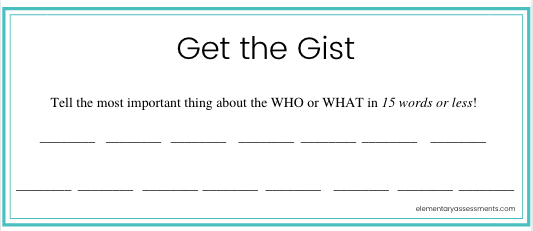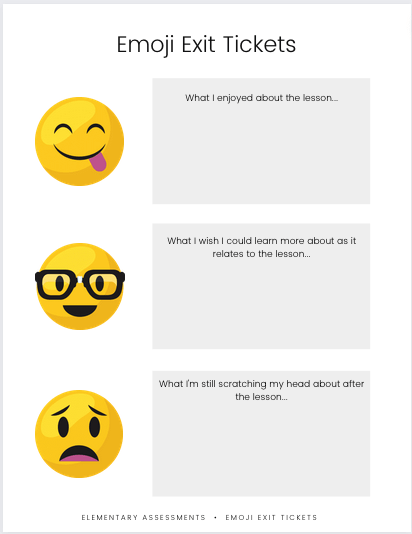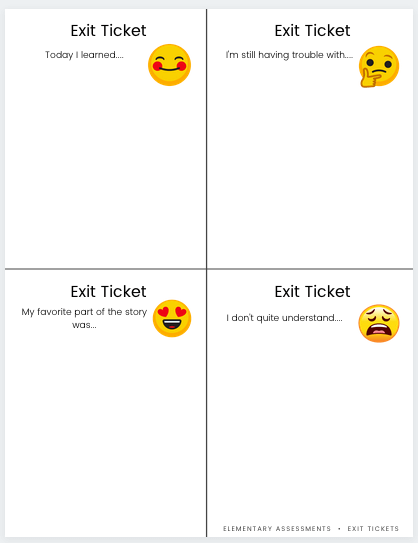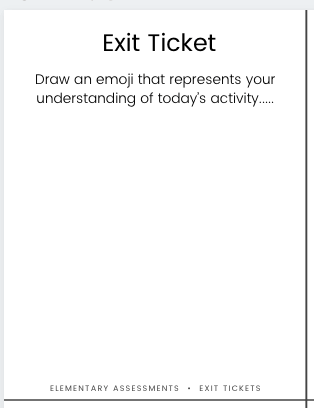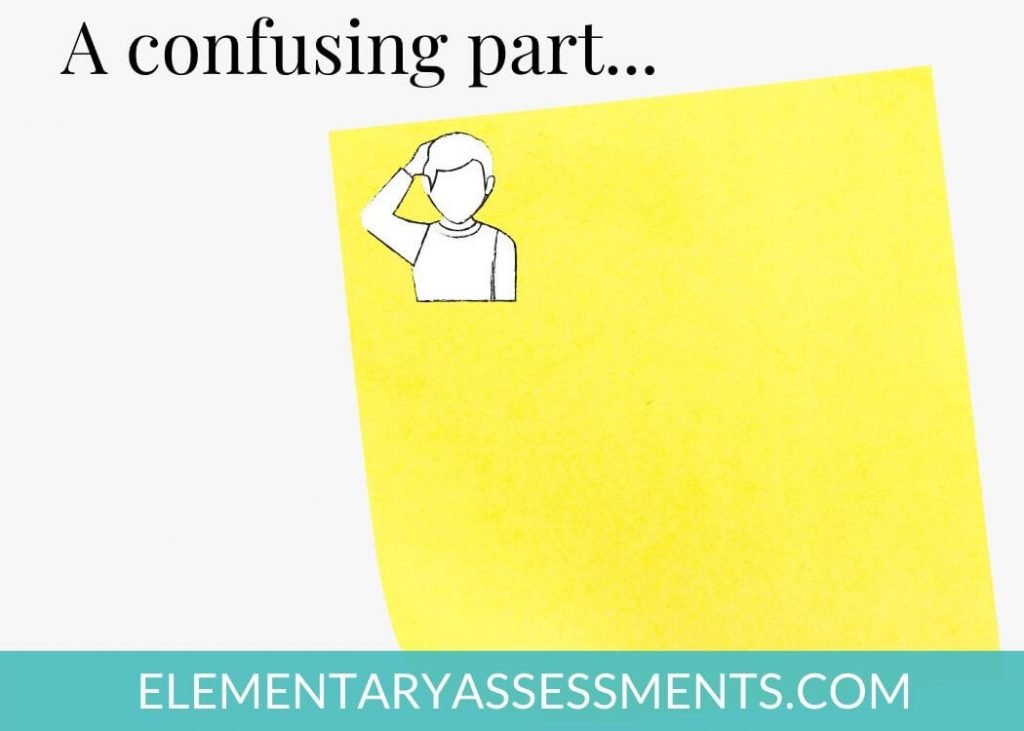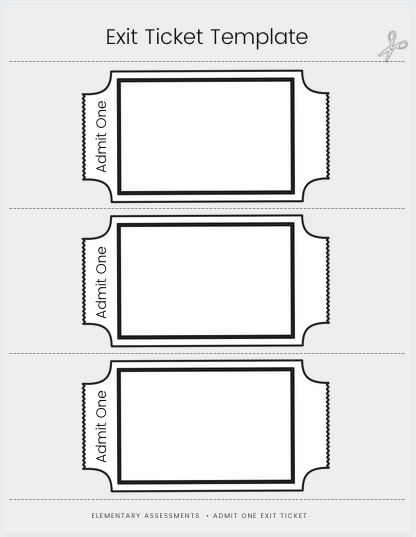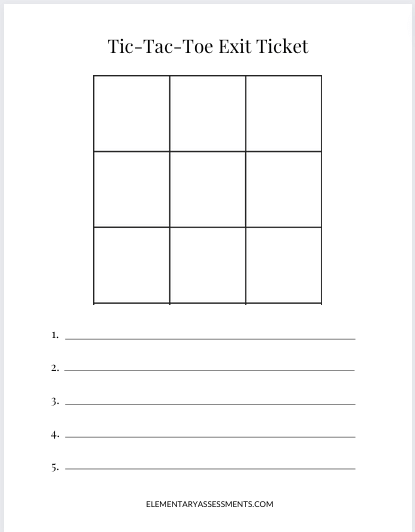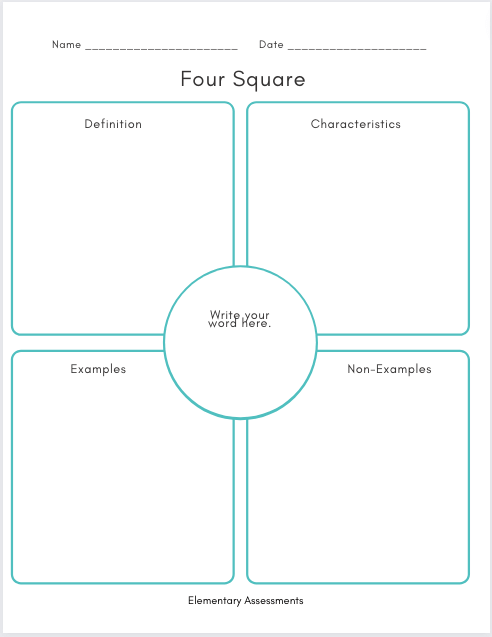You’ve just taught a great math lesson and feel your students “got it”… but did they?
What you need are a few math exit tickets to find out.
What are Math Exit Tickets?
Math exit tickets are quick, informal assessments that gauge how well learners grasped the lesson.
They prompt students to synthesize concepts, reflect upon new schema, and express their level of understanding.
It’s essential to regularly assess how well students are performing in math because each newly learned skill lays part of the foundation for comprehending more challenging concepts.
The following math exit ticket ideas serve to help teachers informally assess and gather valuable data about students’ math proficiency.
Note: Download a set of math exit tickets towards the end of this post.
Math Exit Tickets: Examples + How to Use
1. 3-2-1
The 3-2-1 exit tickets are divided into three parts: students first give 3 responses to a math prompt, then 2 answers to a math prompt, and then just 1 response to a math prompt.
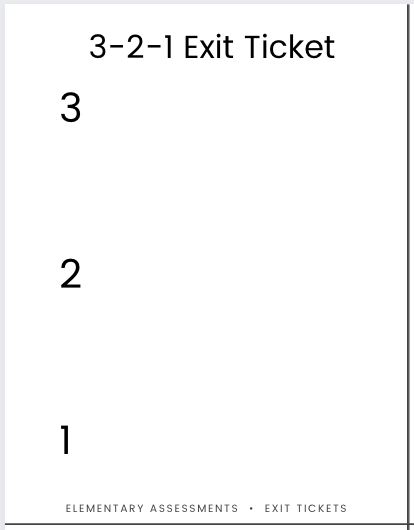
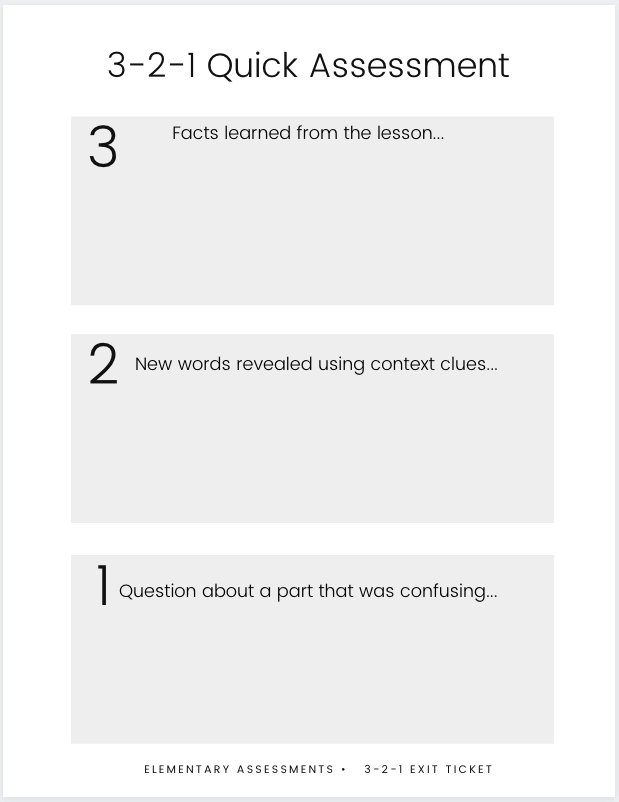
2. Notecards
At the end of a lesson, restate the learning objective, and give students a few seconds to reflect.
Now ask students to write their names and one of the statements below on a notecard:
- Got It.
- More Practice, Please.
- I Need Some Help!
Before leaving class, direct students to deposit their math exit tickets into a folder or bucket.
Afterwards, separate the responses into three categories. Quickly analyze, and adapt future instruction based on the information.
(Source: Erika Savage)
3. Triangle-Square-Circle
Using visual representations, Triangle-Square-Circle prompts students to synthesize information, ask questions, and summarize essential points.
- The triangle, with 3 points, means that students must give three key points they “took away” from the math lesson.
- The square represents what students have “squared away”, or understood, about the math lesson.
- The circle represents one or two lingering questions learners still have about the math lesson.
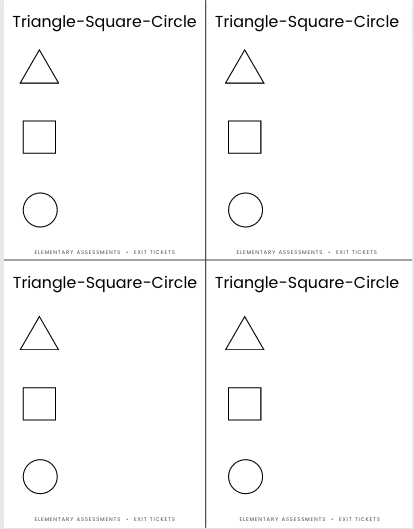
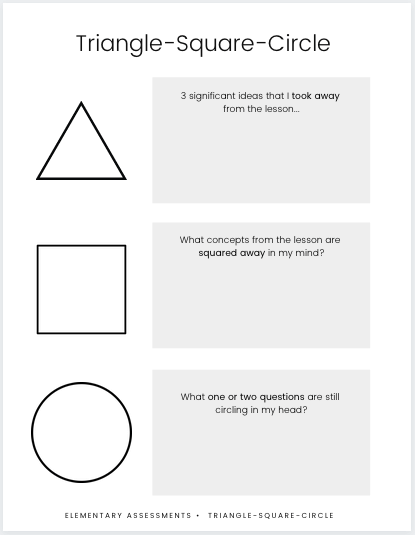
4. Get the Gist
In fifteen words or less, students summarize the main idea of the math lesson.
5. Passport Out
Before learners “take off” for the day, they write…
- One thing learned in the math activity
- One area in which they need more practice
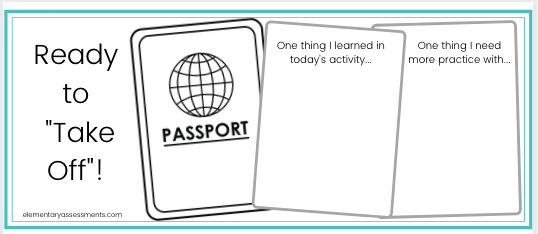
6. Tweet of the Lesson
Students write the most important idea or message of the day’s math activity.
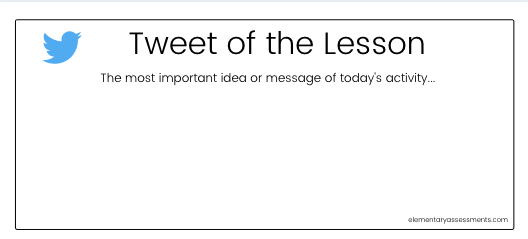
7. Emoji
Use a variety of fun emoji exit tickets to assess students’ understanding of the math lesson.
These tickets ask students to respond to the following tasks:
- Tell what you enjoyed about the lesson.
- What do you wish you could learn more about?
- What are you still scratching your head about?
- Draw an emoji that represents your understanding of today’s activity.
- What did you learn today?
- Which parts are still troubling?
- What was your favorite part of the math lesson?
- Are there any parts that you don’t quite understand?
8. Rating Scale Self-Assessment Math Ticket
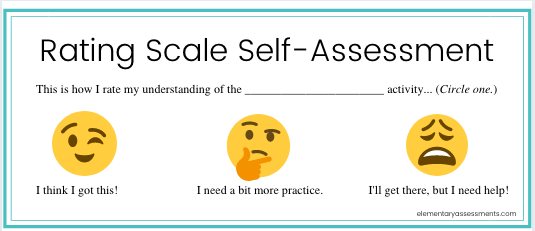
Give students three emojis to choose from…
One “happy”, “sad”, and “neutral”.
They sketch on a sticky note (or circle their choice on a template) which emoji face best reflects their understanding of the math lesson.
9. Sticky Notes
On sticky notes, students write an important part of the math lesson, a confusing part, or a connection that was made.
10. Simile Summary
Encourage critical thinking using a Simile Summary math exit ticket.
This exit ticket idea focuses on vocabulary, prompting students to make a deeper analysis of math terms.
Example…
A quadrilateral is like a….because…
Students complete the statement in a few sentences.
11. Blank
It can be time-consuming to search high and low for that perfect math exit ticket idea that focuses specifically on your targeted learning objective.
So keep a stack of blank math exit tickets on hand.
Students respond to a variety of math exit ticket questions, prompts, and math sentence stems, recording their answers on the blank templates.
12. Pictures, Numbers, Words
These quick tickets showcase students’ depth of number sense.
Here’s how it works…
- Say any number.
- Students demonstrate that number in pictures, numbers, and/or words.
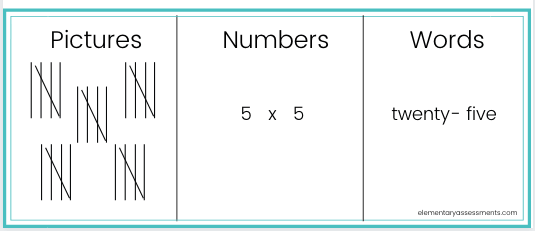
13. Glow and Grow
On a sticky note or in math journals, students write one math area/skill in which they “glowed” – a learning objective that they understood well.
Afterwards, they write one “needs improvement” statement – an area in which they still need to “grow”.
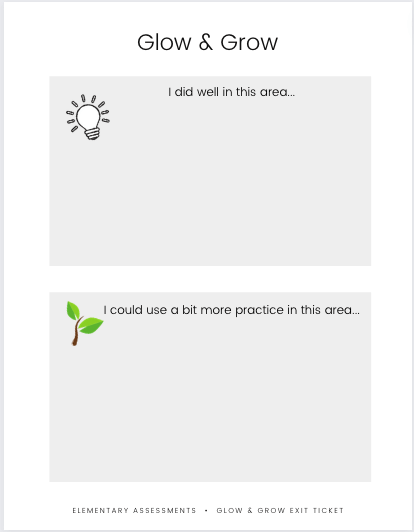
14. Journal Entry
At the end of math instruction, provide 5 to 10 minutes for students to jot down and/or sketch in their math journals any big ideas from the lesson.
For those students who need support, provide question prompts or statement stems.
If you can possibly carve out a bit of time during the week, respond to each student.
Doing so really keeps students engaged and excited about the topic!
15. Exit Interview
Using this idea, students complete an exit interview about the day’s math lesson.

16. Tic-Tac-Toe
Tic-Tac-Toe assesses vocabulary development. It encourages students to seek connections among math concepts.
Here’s how it works…
- Students place key vocabulary terms from the lesson anywhere on their individual Tic-Tac-Toe exit ticket.
- They write five meaningful sentences using the terms.
- The sentences will include three words straight across in any row, straight down from any column, or from any diagonal.
- As a set of 3 words is used, students cross it out.
- Students cannot repeat the same set of 3 words, but a word may be repeated if it’s part of another set.
17. Learning Style Menu
Based on multiple intelligence activities, this assessment offers students the option to choose one of several math exit tickets in order to show what they know.
18. T.A.G Math
Using the T.A.G math exit ticket, students do the following…
- T = TELL something they enjoyed about the lesson.
- A = ASK a question that will help them to get clarity about something.
- G = GIVE a way of how they can improve.
19. Red, Yellow, Green
For this math exit ticket, learners circle one of three colors to represent how well they grasped the lesson material:
- Red = Stop (I’m totally lost.)
- Yellow = I’m struggling a bit. Please go slower.
- Green = I’m ready to move on.
20. Story Frame
Story frames are powerful tools that help students frame the learning while synthesizing concepts.
Essentially, story frames are an extension of math sentence stems and encourage students to think deeper.
In the example below, students complete the math story frame, explaining the steps used to solve a math problem.
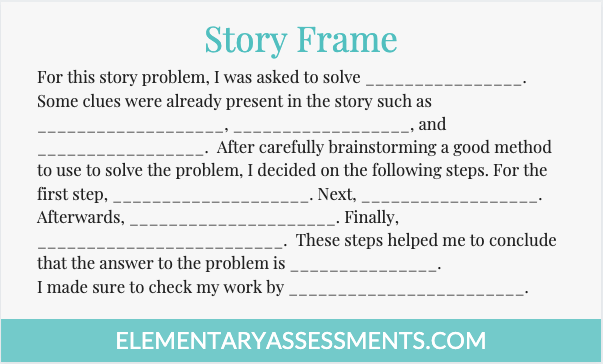
21. Ticket to Leave
During those few moments right before the dismissal bell is where this no-prep math exit ticket fits best.
As students line up to be dismissed, give each a multiplication fact to solve or a quick true/false statement related to a math topic.
Ideally, questions/statements should be yes/no or one-answer.
Move fast so that every student has a chance to answer a question before leaving.
22. Four-Square
This math exit ticket reinforces vocabulary acquisition.
Choose a math term to place in the center of the Four-Square math exit ticket.
Students write the definition of the term, record its characteristics, give one example, and then provide one non-example.
23. Park Your Questions Here

24. Digital Exit Tickets for Math
Use a variety of digital exit tickets to assess students’ understanding of concepts.
Final Thoughts: Math Exit Tickets
Math exit tickets are quick informal assessments that provide valuable feedback to teachers so that they can modify instruction to better serve students.
Be sure to include a few of these essential tools in your lesson plans this week.
If you liked these math exit ticket ideas, you may be interested in … exit ticket templates.


